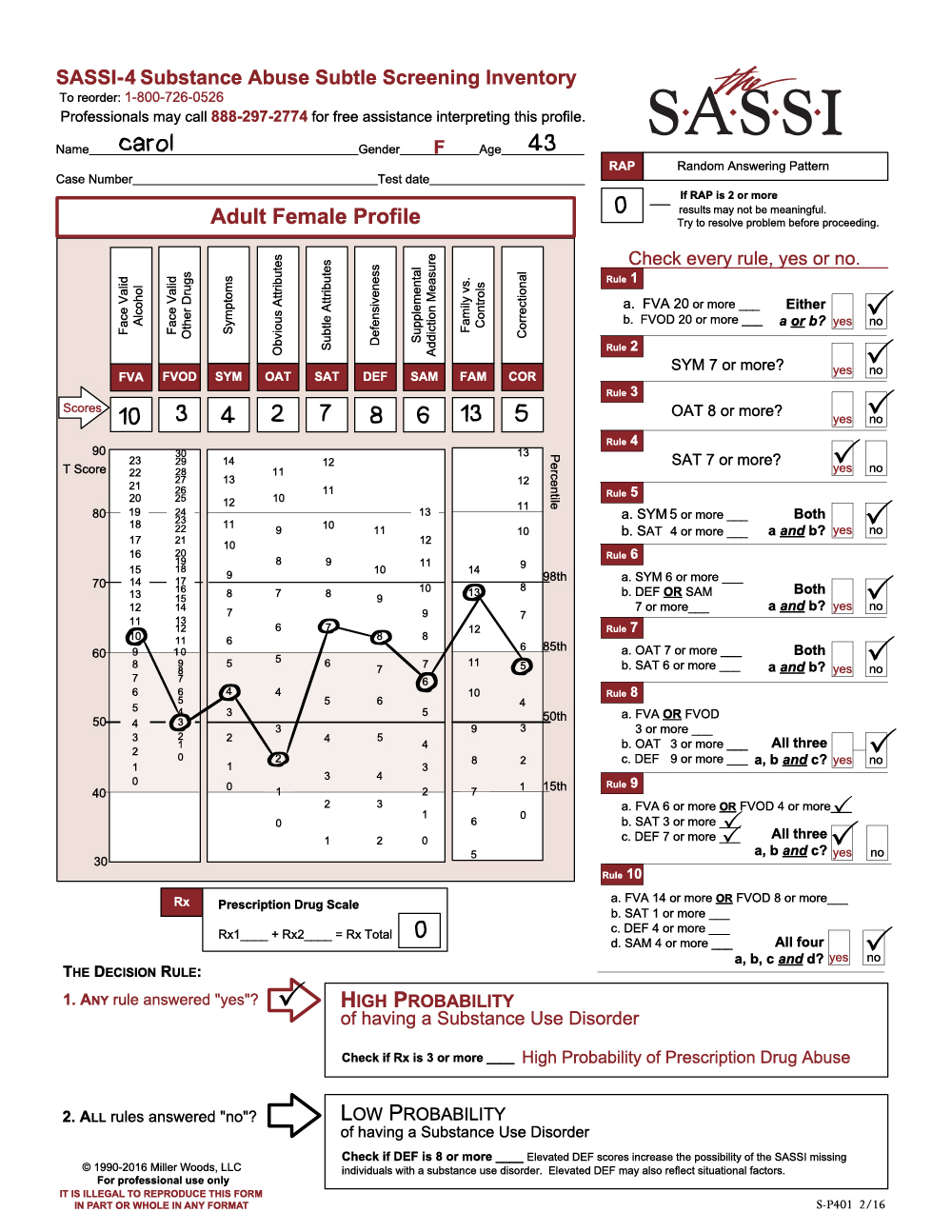We regularly get inquiries about the acceptability of reading the questionnaire to a client who may have difficulty with their reading skills. We discourage the evaluator from reading the questionnaire to the client for a variety of reasons, but the primary one concerns the validity of the results. No matter how careful the reader might be, the tone of voice or emphasis on a particular part of the question may lead the client in one direction or another. Or the client may interrupt with a question regarding the meaning of a word or intention of a particular question. This is why we offer a professionally read audio CD of the SASSI-4, Adolescent SASSI-A3 and Spanish SASSI paper and pencil versions for clients who have reading difficulties. We hope in the future to be able to offer this for the online platform as well. Please contact our customer service department for ordering information.
Another frequent question is related to the clinical interpretations of the “low” scores on the profiles. These mostly relate to the subtle scales which include the OAT, SAT, DEF and SAM scales. Most callers know what a low DEF indicates. And SAM has no clinical interpretation.
So what about those low OAT and SAT scales? What does “low’ mean? A low score is anything below the 15th percentile on the graph. In the example to the right, the caller indicated that she was doing an assessment on a health care professional who had been arrested for her one and only DWI the previous year, had completed her alcohol education class and needed this evaluation as a final step for probation. She was not in trouble in her job and in fact, highly regarded in her profession. Given the client was at the end of her requirements, the evaluator was somewhat concerned with the results and what it meant. The instructions were given to answer the FVA/FVOD side for the last twelve months. Her RAP is zero. Her Prescription Drug Scale is zero. She has ‘no’ on all the rules so came up with a Low Probability of having a Substance Use Disorder. However, her DEF of 9 is highly elevated. Elevated DEF scores increase the possibility of the SASSI missing individuals with a substance use disorder. Elevated DEF may also reflect situational factors. Note that the SAM is within the norm so it is probably more likely that her DEF is situational given the context. She also has an OAT score of ‘O’ and a SAT score of ‘2’. Both are below the 15th percentile. A low OAT indicates someone has difficulty acknowledging personal limitations or shortcomings. A low SAT indicates someone who might have a ‘chip’ on her shoulder, a hypersensitivity to others or feelings of rejection.
So even though this client is nearing the completion of her probation requirements, we still get a picture of someone who is highly guarded (DEF), has a hard time acknowledging shortcomings (OAT) and may continue to exhibit resentment (SAT) for the situation she is in. Perhaps this is due to her profession, or perhaps it is her personality. What the results give the evaluator is clinical direction on how to approach the client to help reduce her defensiveness and give her permission to open up. Affirming how demanding her job is and how on top of things she must be could be a pathway to discussing her feelings of shame related to the DWI and how it might be affecting her self-esteem. Could she be minimizing her use of alcohol and drugs? Perhaps, but as we strongly express, the SASSI is only one part of a clinician’s assessment. Hopefully, with the input of all the information you have, the clinician can evaluate the results which fit the context for this client.








